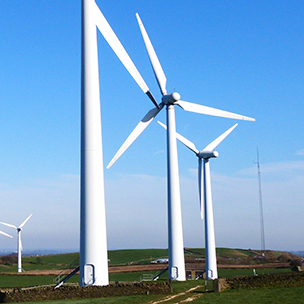August 12, 2015 — States hoping to increase their share of renewable energy to achieve the emissions reduction goals set forth in the President’s recently-announced Clean Power Plan may have just received an unexpected boost from wind energy.
According to the U.S. Department of Energy’s “2014 Wind Technologies Market Report” released earlier this week, the prices offered by wind projects to utility purchasers in the U.S. dropped below 2.5 cents per kilowatt-hour for the first time in history.
Costs are being driven down by technological advancements, including the production and installation of turbines with greater generating capacity, an increase in turbine hub height up to 272 feet (83 meters) and an increase in average rotor diameter. Taken together, these changes are not only driving down the cost of wind energy in blustery locations, but also making it more economical in low-wind areas.
Overall, US$8.3 billion was invested in 4.9 gigawatts of new wind power capacity in 2014. At present, wind power meets nearly 5 percent of the total U.S. electricity demand. Employment in the wind energy sector also saw a bump up in 2014 to 73,000 workers, compared to 50,500 in 2013.
Further bolstering wind energy’s prospects, an announcement from researchers at the Lawrence Berkeley National Laboratory — the research center that prepared the report — noted that 2014 wind energy contracts “compare very favorably to a range of projections of the fuel costs of gas-fired generation extending out through 2040.” ![]()
Photo by Steve p2008 (Flickr | Creative Commons)
Ensia shares solutions-focused stories free of charge through our online magazine and partner media. That means audiences around the world have ready access to stories that can — and do — help them shape a better future. If you value our work, please show your support today.
Yes, I'll support Ensia!
